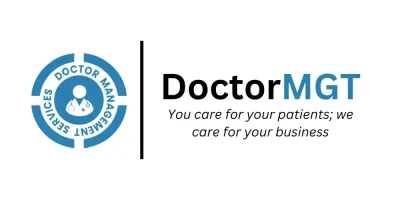The 2025 ICD-10 code R51 serves as an official method to record headache symptoms. This medical code provides healthcare professionals with an essential tool for recording the various headache manifestations that commonly appear in patients.
Healthcare providers must understand the correct application of ICD-10 R51 in order to provide proper diagnoses. This code aids them in both appropriate documentation and successful claims reimbursement.
This guide explores R51 in detail. We are going to cover the R51 code, its supporting sub-codes, and practical billing and coding applications. Alongside this, we’ll touch on how mental health billing services can help simplify the process for your practice.
What is the ICD-10-CM Code R51?
The unspecified variety of headaches falls under the ICD-10-CM Code R51 category. R51 serves as an applicable code to document headaches without specific symptoms or unknown root causes. The headache category comprises several types of conditions, including daily headaches in addition to cervicogenic headaches and both sinus and facial pain headaches.
As a basic code, R51 functions as an essential diagnostic element when thorough medical symptom details remain inaccessible to providers.
Subcategories of R51
The R51 code has two subcategories:
- R51.0: Headache with orthostatic components, not elsewhere classified.
- R51.9: Headache, unspecified.
These subcategories further identify the patient’s symptoms and clinical presentation and thus refine the diagnosis. When a healthcare provider establishes an exact diagnosis, they should select alternative diagnostic codes, such as G44.309 (post-traumatic headache) or G43 (migraine).
The Clinical Importance Of Accurate Coding
Headaches can either be primary (e.g., migraines) or secondary (e.g., post-traumatic headaches). Proper coding not only ensures Medicare guidelines compliance but also mitigates risks involved, such as audits or claim denials.
Thus, a perfectly inputted code signifies that the provider has the best knowledge of the services provided and brings about the total recovery of the payment request from the insurer.
- Post-Traumatic Headache: G44.309 codes the experience of trauma-related headaches.
- Drug-Induced Headache: G44.40 registers the manifestation of headache due to drug interactions or withdrawal.
Exact coding positively influences treatment plans and patient results. For example, chronic tension-type headaches (G44.201) call for different management strategies than those of cluster headaches (G44.029).
Headache Prevalence In USA
As per the Centers for Disease Control and Prevention (CDC), 4.8% of U.S. adults in a three-month period experienced debilitating headaches.
The symptoms of neurological migraines show that women are the most affected, as they have 3 times more attacks than men.
Common Types of Headaches
Headache conditions represent numerous disorders that exhibit separate features and respective ICD-10 coding attributes. Accurate diagnosis, along with proper coding, remains necessary to deliver effective healthcare while processing medical claims.
We elaborate on these detailed descriptions below:
| Headache Type | Description | ICD-10 Code |
| Migraine | Severe, often with aura | G43 |
| Cluster Headache | Intense, unilateral pain in cycles | G44.0 |
| Cervicogenic Headache | Originates from neck issues | Not specifically G44.82 |
| Thunderclap Headache | Sudden onset, severe pain | G44.53 |
| Tension-Type Headache | Mild to moderate, band-like sensation | G44.2 |
| Post-Traumatic Headache | Following head injury | G44.309 |
| Drug-Induced Headache | Caused by medication overuse or withdrawal | G44.40 |
Migraines (G43)
Severe headaches known as migraines strike patients multiple times with nausea, vomiting, and sensitivity to light or sound. The type of migraine can also be broken down with the categorization of whether an “aura” is present or not—a neurological phenomenon that happens before the headache starts.
Some of the common subsets are
- G43.0: Migraine without aura
- G43.1: Migraine with aura
- G43.4: Hemiplegic migraine, which involves temporary weakness on one side of the body
- G43.5: Persistent migraine aura without cerebral infarction
Migraines are attributable to genetics and may also be evoked by various agents, including food, emotions, and hormone-related factors.
Cluster Headaches (G44)
A primary headache condition, cluster headache displays its symptoms through severe, unidirectional pain that is located near the eye or temple region. They appear regularly through repeated bouts of high-frequency attacks, which switch into periods of resolution. Key features include:
- G44.0: Cluster headache syndrome, unspecified
- G44.01: Episodic cluster headache
- G44.02: Chronic cluster headache
The onset of attacks causes an eye redness effect combined with increased eye moisture, together with nasal congestion and physical restlessness symptoms.
Cervicogenic Headaches
The G44.82 code does not directly classify cervicogenic headaches because it only refers to headaches occurring during sexual activity. Medical professionals diagnose neck-related headaches with alternative diagnostic codes and add descriptions in their patient notes. Cervical spine structural pain affects the head and requires physical therapy treatment or chiropractic interventions for recovery.
Thunderclap Headaches (G44.53)
This type of headache starts abruptly and reaches total severity during a brief amount of time. Experts rank thunderclap headaches as the most intense headache pain humans can experience.
The primary type of thunderclap headache has no determined source yet; secondary thunderclap headaches are linked to serious health events such as subarachnoid hemorrhage.
The code for primary thunderclap headaches is G44.53.
Other Important Headaches
- Tension-Type Headaches: These are the most common type, usually felt like a band or squeezing pressure around the head. They are mostly dull to moderate in severity.
- Post-Traumatic Headaches: These headaches come after a head injury and can be coded as G44.309.
- Drug-Induced Headaches: These are the ones that result from medication overuse or withdrawal, coded as G44.40.
Every headache complaint requires proper documentation for an accurate diagnosis, treatment, and billing. Having knowledge of these differences is vital for healthcare providers to deliver the right care and to manage billing processes efficiently.

The Role of Mental Health in Headache Management
Headaches commonly coexist with mental health conditions like stress and anxiety. Mental health billing and collection services are very important in the application of behavioral health therapies to headache management. As an example, the therapy to relieve stress-induced headaches may require both ICD-10 and CPT codes for correct billing.
Clinical Applications of R51
Here is some important application of this code in different settings:
Primary Care Settings
The main reason patients visit primary care facilities is due to headaches. Medical practitioners frequently note patients who experience continuing or repeated headaches through the medical diagnostic code R51 when there are no definite test results for the condition.
Neurology Practices
Nonspecific headache symptoms should initially use R51 during the assessment until the practitioner conducts additional examinations that identify specific conditions like migraines (G43) or trigeminal neuralgia (G50).
Emergency Departments
R51 serves emergency physicians as an immediate head pain diagnosis method, allowing necessary intervention until definitive diagnostic exams are complete.
Navigating Complex Cases
The secondary nature of headache symptoms develops following medical procedures or surgical treatments. When documenting complications from past procedures, you can use the ICD-10 code Z98.890—other specified postprocedural states—in conjunction with R51. The integrated code with R51 streamlines insurance claims procedures that require full coding documentation.
The 2025 Update and R51: What You Need to Know
The R51 code has undergone modifications according to the latest release of the 2025 ICD-10-CM. The healthcare industry developed these diagnostic updates in order to enhance the precision levels and diagnosis accuracy rates for headaches. The basic framework of the classification code stays unaltered, but these changes will help doctors classify headaches better in secondary medical condition situations.
The 2025 update enhanced the classification method for various types of headaches. Medical practitioners need supplementary coding when a patient experiences a headache that stems from a primary medical condition such as brain tumors or sinus infections.
ICD-10-CM Code R51 is the very first source for diagnosing unspecified headaches, helping to correctly document and make effective treatment plans. The knowledge of other codes like Z98.890 combined with cutting-edge medical billing companies California is a must to support patients and make operations more efficient.







